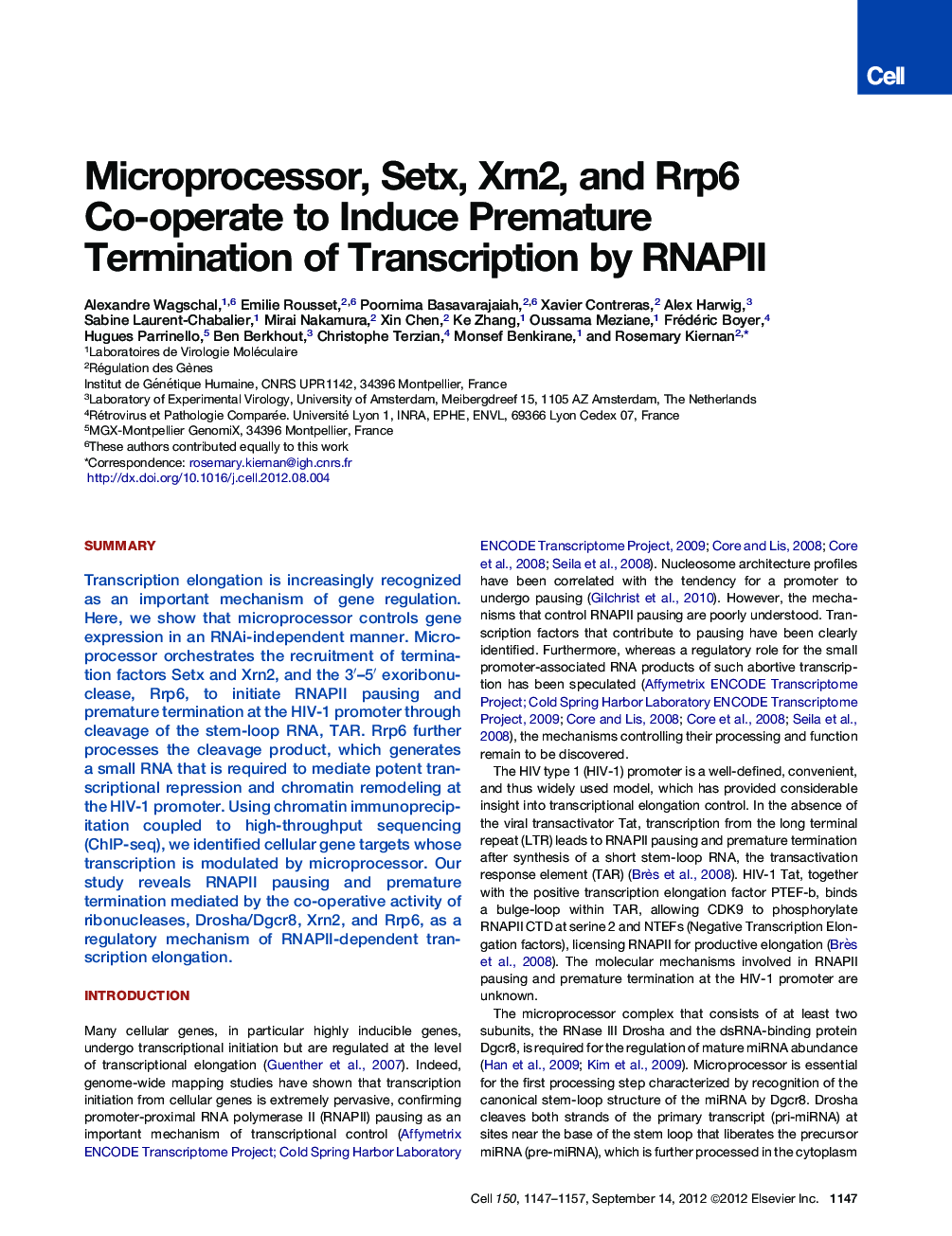| Article ID | Journal | Published Year | Pages | File Type |
|---|---|---|---|---|
| 2035944 | Cell | 2012 | 11 Pages |
SummaryTranscription elongation is increasingly recognized as an important mechanism of gene regulation. Here, we show that microprocessor controls gene expression in an RNAi-independent manner. Microprocessor orchestrates the recruitment of termination factors Setx and Xrn2, and the 3′–5′ exoribonuclease, Rrp6, to initiate RNAPII pausing and premature termination at the HIV-1 promoter through cleavage of the stem-loop RNA, TAR. Rrp6 further processes the cleavage product, which generates a small RNA that is required to mediate potent transcriptional repression and chromatin remodeling at the HIV-1 promoter. Using chromatin immunoprecipitation coupled to high-throughput sequencing (ChIP-seq), we identified cellular gene targets whose transcription is modulated by microprocessor. Our study reveals RNAPII pausing and premature termination mediated by the co-operative activity of ribonucleases, Drosha/Dgcr8, Xrn2, and Rrp6, as a regulatory mechanism of RNAPII-dependent transcription elongation.
Graphical AbstractFigure optionsDownload full-size imageDownload high-quality image (200 K)Download as PowerPoint slideHighlights► Microprocessor functions in transcription independently of RNAi ► Microprocessor induces premature termination by recruiting Setx, Xrn2, and Rrp6 ► Rrp6-dependent biogenesis of small TAR RNAs mediates silencing of HIV-1 LTR ► Microprocessor also regulates endogenous retroviruses and a subset of cellular genes
